Comprehensive Guide to Handling Roof Storm Damage
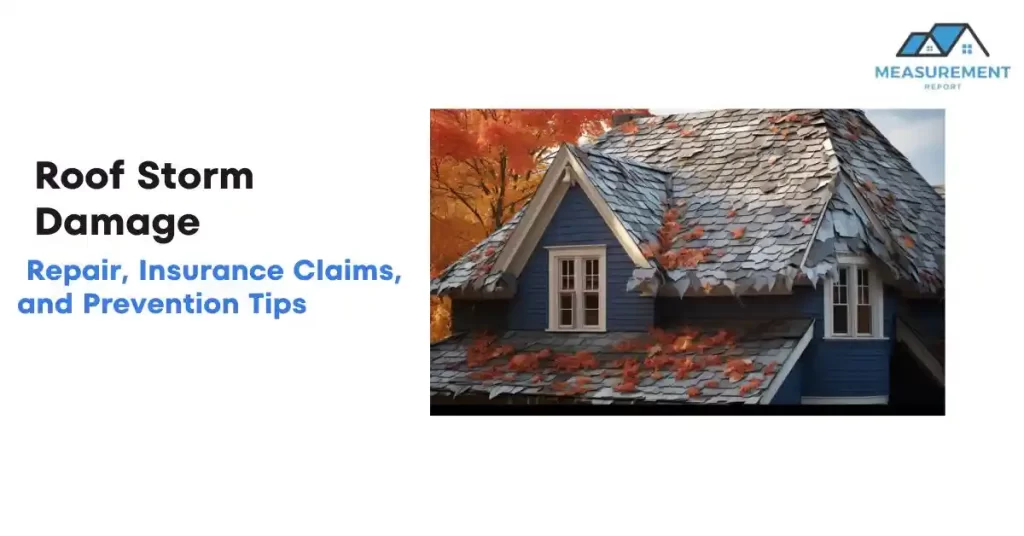
Roof storm damage is a prevalent issue for homeowners, particularly in regions prone to severe weather conditions. Storms, whether they bring wind, hail, rain, or snow, can wreak significant havoc on the integrity of a roof. The aftermath of these weather events often includes a range of damages, from minor shingle displacement to more severe structural compromise. The impact of such damage goes beyond mere aesthetics; it can lead to water leakage, insulation problems, and, over time, deteriorate the overall structure of the home.
The key to mitigating the adverse effects of roof storm damage lies in a timely and effective response. Quick action not only helps in preventing the escalation of damage but also in maintaining the safety and security of the home. It’s crucial for homeowners to understand the signs of storm damage, the steps to take immediately after a storm, and the importance of professional assessments and repairs. Navigating insurance claims can be another critical aspect of this process, often determining the financial and logistical feasibility of repairs.
In this guide, we will explore the various facets of dealing with roof storm damage. From identifying and assessing the damage, to understanding insurance processes and executing repairs, this article aims to provide comprehensive information and practical advice for homeowners facing the aftermath of a roof-damaging storm.
Common Signs of Roof Storm Damage
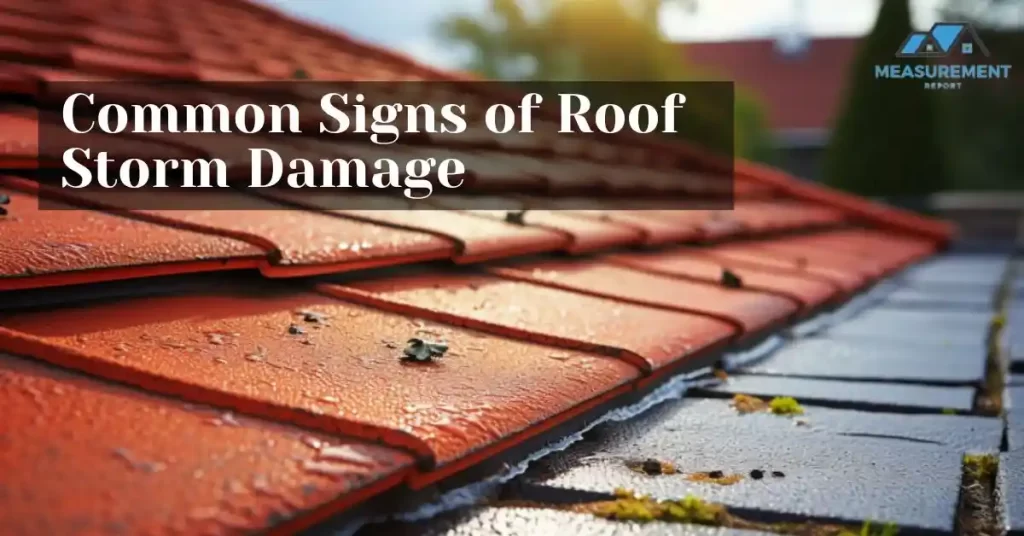
Missing or Damaged Shingles: One of the most conspicuous signs of storm damage to a roof is the presence of missing or damaged shingles. High winds and heavy hail can dislodge or break shingles, leaving your roof vulnerable to water infiltration and further damage. Look for shingles that are cracked, torn, or completely missing. In some cases, you might find these shingles scattered in your yard, a clear indicator of storm impact.
Granule Loss and Debris Accumulation: Another telltale sign is the loss of granules from shingles, often found in gutters and downspouts. Granules protect shingles from UV rays and add an extra layer of defense against the elements. Their loss can significantly diminish the longevity and effectiveness of your roof. Additionally, pay attention to debris accumulation on the roof. Branches, leaves, and other debris can indicate more severe, hidden damage.
Soffit, Fascia, Gutter, and Flashing Damage: The soffit and fascia, which are integral to your roof’s ventilation and aesthetics, can also suffer during storms. Look for signs of bending, detachment, or decay. Similarly, gutters and flashings (metal pieces that direct water away from critical areas) can be dented or torn off by strong winds or heavy hail. Such damages can lead to water seepage, causing more extensive issues if not addressed promptly.
Internal Signs: Leaks and Attic Inspections: Finally, it’s crucial to inspect the interior of your home for signs of roof damage. This often involves a thorough check of the attic for any leaks or water stains, especially after a storm. Water stains on your ceilings or walls are red flags, indicating that the storm may have compromised the roof’s integrity. Pay special attention to any musty odors or mold, as these can be signs of prolonged water exposure due to roof damage.
In summary, identifying roof storm damage involves a comprehensive examination of both the exterior and interior of your home. Homeowners should be vigilant in recognizing these signs and act swiftly to address them. Ignoring these indicators can lead to more significant problems, turning what might be a simple repair into a need for a full roof replacement. Remember, when in doubt, consulting a professional roofing contractor for an inspection can provide peace of mind and ensure that all storm-related damages are appropriately identified and addressed.
Types of Storms and Their Impact on Roofs
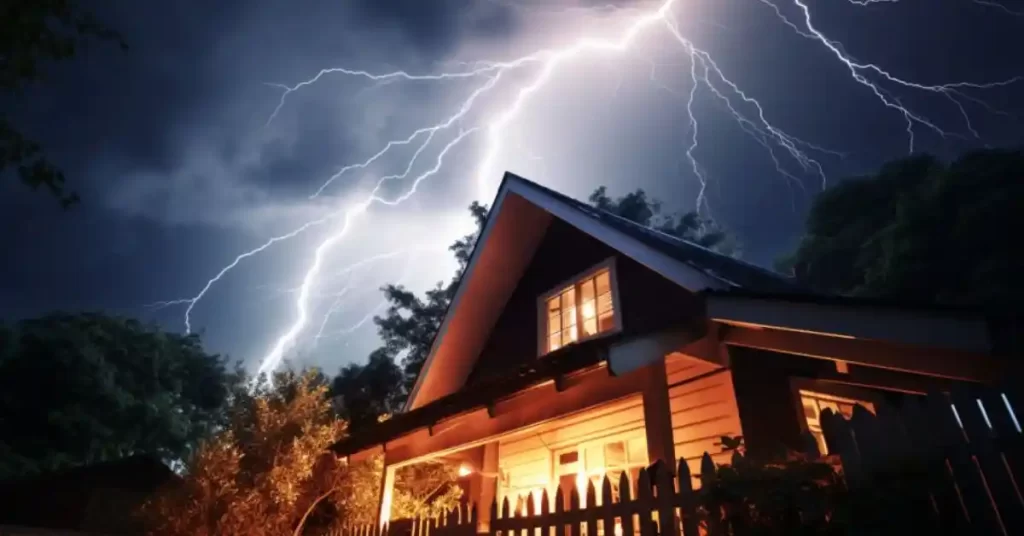
Wind Damage: Wind is one of the most common causes of roof damage. The intensity of wind during a storm can vary greatly, but even moderate winds can lift or remove shingles, leaving the roof deck and underlayment exposed to the elements. In severe cases, wind can cause debris to collide with the roof, leading to punctures or other structural damage. The corners and edges of the roof are particularly susceptible to wind damage, as these areas experience more stress.
Hail Damage: Hail can be incredibly destructive to roofs. The impact of hailstones can dislodge granules from the surface of asphalt shingles, exposing the underlying bitumen to sunlight and weathering. This exposure can accelerate the aging process of the shingles. In more severe cases, hail can create dents or even puncture the roofing material. Metal roofs, while more resilient to hail, can still suffer from dents and cosmetic damage.
Heavy Rains and Thunderstorms: Heavy rains and thunderstorms can lead to significant roof damage, primarily through water intrusion. Prolonged exposure to rain can exploit any weak spots in the roof, leading to leaks. Over time, this can cause rot in wooden components of the roof and rust in metal parts. Flashing, designed to seal edges and prevent water entry, can be compromised during heavy rains, exacerbating the risk of leaks.
Ice and Snow Storms: In colder climates, ice and snow can pose a unique threat to roofs. The weight of accumulated snow can strain the structural integrity of a roof, especially if it’s not designed to bear such loads. Ice dams, formed when melted snow refreezes at the roof’s edge, can prevent proper drainage, causing water to back up under shingles and leak into the home. Additionally, the freeze-thaw cycle can exacerbate existing cracks or damage to the roofing material.
Each type of storm presents its own set of challenges for roofs. Homeowners should be aware of the kinds of storms typical in their area and understand the specific risks they pose. Regular roof maintenance and inspections can help identify vulnerabilities before they are exacerbated by storm conditions. In the aftermath of any storm, a thorough inspection is crucial to identify and address any damage promptly, ensuring the longevity and integrity of the roof.
What to Do Right After a Storm
Documenting the Damage: Once it is safe to do so, the first step after a storm is to document any damage. This is crucial for insurance claims and for any professional assessments that may follow. Begin by taking detailed photos or videos of your roof and any other affected areas of your property. Capture different angles and close-ups of the damage. Note the date and time of these images, as they provide evidence of the storm’s impact. Additionally, keep a record of the storm details (date, type of storm) and any immediate actions taken, such as covering a leak or removing debris.
Implementing Temporary Fixes: If the damage is causing immediate issues, such as leaks, it’s important to implement temporary fixes to prevent further damage to your home. This might include using tarps to cover exposed areas or sealing minor leaks with roofing cement. However, these are only short-term solutions, and professional repair should follow as soon as possible. Be cautious when attempting any temporary repairs, and do not compromise your safety.
Safety Precautions to Consider: Safety should be the top priority after a storm. Be aware of hazards such as loose power lines, broken glass, or unstable structures. Avoid climbing onto the roof if it seems unsafe or if you are not experienced with such activities. Wet roofs can be slippery, and hidden damage may make them unstable. If you need to clear debris, use appropriate protective gear like gloves and safety glasses. When in doubt, wait for a professional to assess the situation and carry out necessary actions.
In the immediate aftermath of a storm, quick action combined with caution can mitigate the effects of roof damage. While it’s important to document and address issues promptly, the safety of you and your family should always come first. After addressing immediate concerns, the next steps typically involve contacting your insurance company and seeking professional roof repair services.
Navigating Insurance Claims
Understanding Roof Storm Damage Insurance Coverage
Types of Damage Covered: It’s crucial to understand what your homeowner’s insurance policy covers in terms of roof storm damage. Most policies cover damage caused by unpreventable reasons like wind, hail, and rain. However, the extent of the coverage can vary. For instance, some policies may cover the total cost of repairs or replacement, while others might only cover a portion, depending on the age and condition of the roof. Also, certain types of damage, like that from flooding, might require additional coverage. Reviewing your policy details or consulting with your insurance agent can provide clarity on what damages are covered.
Filing a Claim: Step-by-Step Guide:
- Assess the Damage: Before contacting your insurance company, assess the damage and gather evidence, such as photos and videos.
- Review Your Policy: Familiarize yourself with your policy’s coverage details, deductibles, and any time limits on filing a claim.
- File the Claim: Contact your insurance company as soon as possible to file the claim. Provide them with all necessary documentation and information about the damage.
- Schedule an Inspection: The insurance company will likely send an adjuster to inspect the damage and determine the claim’s validity and value.
- Get Repair Estimates: While waiting for the adjuster, obtain repair estimates from licensed contractors to compare with the insurance company’s assessment.
- Negotiate the Claim: If necessary, negotiate with your insurance company regarding the claim amount, especially if it doesn’t align with repair estimates.
Dealing with Insurance Adjusters and Approvals
What to Expect from an Insurance Adjuster’s Visit: The adjuster’s visit is a critical step in the insurance claim process. They will inspect the damage and determine the cost of repairs that the insurance policy should cover. Be prepared to walk them through the damage and provide any documentation you’ve gathered. They might take their own photos and measurements, and ask questions about the damage and how it occurred.
Tips for a Smooth Insurance Claim Process:
- Documentation: Keep detailed records of all communication with your insurance company, including dates and summaries of conversations.
- Be Proactive: Stay in regular contact with your insurance company to keep the process moving.
- Understand the Settlement: Make sure you fully understand the terms of the settlement, including what is covered and what is not.
- Seek Professional Advice: Consider consulting with a public adjuster or a lawyer if the claim process becomes contentious or if you believe the insurance company’s offer is unfair.
- Avoid Rushed Decisions: Don’t rush into a settlement if it doesn’t adequately cover your repair needs. Take your time to understand and negotiate the claim.
Navigating insurance claims for roof storm damage can be complex. However, with proper understanding, documentation, and a proactive approach, homeowners can effectively manage this process, ensuring they receive the necessary coverage for repairs. Remember, the goal is to restore your roof to its pre-storm condition, safeguarding your home against future weather-related incidents.
Professional Assessment and Repair
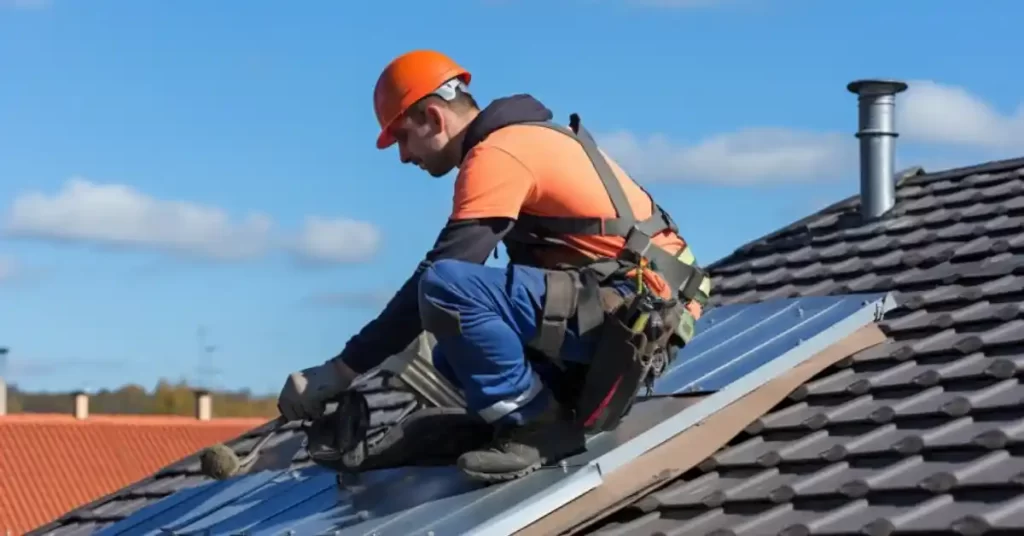
The Need for Professional Roof Inspection
After a storm, even if you’ve done a preliminary assessment, a professional roof inspection is crucial. Professionals have the expertise to identify not just obvious damage but also subtle issues that might lead to serious problems later. They can assess the structural integrity of your roof and identify any necessary repairs or replacements. Professional inspections are often required by insurance companies before a claim is processed, and they can also help in providing an accurate estimate of repair costs.
How to Find a Reliable Roofing Contractor:
- Seek Recommendations: Start by asking friends, family, or neighbors for referrals, especially those who have recently had roofing work done.
- Check Credentials: Look for contractors who are licensed, insured, and have a good standing with the Better Business Bureau or similar organizations.
- Read Reviews and Testimonials: Online reviews and testimonials can provide insights into the contractor’s reliability, quality of work, and customer service.
- Get Multiple Quotes: Obtain quotes from several contractors to compare prices and services. However, don’t choose based solely on price; consider experience and quality of work too.
- Ask for References: Request a list of previous clients to get feedback on their experiences with the contractor.
- Verify Insurance and Licensing: Ensure that the contractor has liability insurance and worker’s compensation to protect you from liability in case of accidents.
- Written Estimates and Contracts: A reputable contractor will provide a detailed written estimate and contract, outlining the scope of work, materials to be used, timelines, and payment terms.
Understanding the Inspection Report:
- Damage Assessment: The report should detail the extent of the damage, including specific areas and elements of the roof that are affected.
- Repair or Replacement Recommendations: It should clearly state whether repairs are sufficient or if a full replacement is necessary.
- Cost Estimates: The report will likely include an estimated cost for the recommended repairs or replacement.
- Photographic Evidence: Many inspectors include photos of the damage in their reports, which can be useful for insurance claims.
- Timeline: An estimated timeline for how long the repairs or replacement will take should be included.
- Maintenance Tips: Some reports may also offer advice on maintaining your roof to prevent future damage.
A professional roof inspection and a reliable roofing contractor are indispensable for effectively addressing roof storm damage. They ensure that all damage is identified, accurately estimated, and properly repaired, restoring the safety and integrity of your home.
Best Roof Repairing Company in USA.
Selecting the “best” roof repairing company in the USA can be subjective and depends on various factors including location, specific needs, budget, and personal preferences. However, there are several nationally recognized companies known for their quality services and wide coverage. It’s important to research and choose a company that is reputable, licensed, and insured. Here are some well-known roofing companies in the USA:
- CentiMark Corporation: Known for its commercial roofing services, CentiMark offers a wide range of roofing solutions and has a strong reputation for quality and customer service.
- Tecta America: This is another large commercial roofing company that provides a variety of services, including installation, replacement, and repairs.
- Baker Roofing Company: With a long history and a good reputation, Baker Roofing provides both commercial and residential roofing services.
- Nations Roof: Specializing in commercial roofing, Nations Roof is known for its professional approach and nationwide service.
- Aspen Contracting Inc.: Aspen is known for its residential roofing services and is recognized for its professionalism and customer-centric approach.
- The Home Depot: Through its Home Services department, The Home Depot offers roof installation and repair services with a wide range of roofing options.
- Lowe’s: Similar to The Home Depot, Lowe’s offers roofing services through its network of professional independent contractors.
Remember, the best company for your needs might not be the largest or most well-known. Local companies can also provide excellent service and may be more attuned to the specific requirements of your area’s climate and building codes. Always check for reviews, ask for references, and verify credentials before making a decision. Additionally, obtaining multiple quotes can help ensure that you get the best service for a competitive price.
Typical Repair Process and Timeline
Initial Assessment: The first step in repairing a storm-damaged roof is a thorough assessment by a professional. This will determine the extent of the damage and what repairs are necessary.
Estimate and Approval: After the assessment, the roofing contractor will provide an estimate for the repair work. Once you approve this estimate (and, if applicable, it’s approved by your insurance company), the actual repair process can begin.
Repair Work: The nature and extent of the damage will dictate the repair work needed. This can range from replacing a few shingles to more extensive structural repairs.
Timeline: The timeline for roof repair can vary greatly depending on the extent of damage and the contractor’s schedule. Minor repairs may be completed in a day or two, while more extensive damages could take several weeks. Weather conditions can also impact the timeline.
Final Inspection and Completion: Once repairs are done, a final inspection is often conducted to ensure the work meets quality standards. After the inspection, your contractor will declare the project complete.
DIY vs. Professional Repair: Making the Right Choice
DIY Repair:
- Pros: Cost-effective for minor damages; instant fix for emergency situations; personal satisfaction of maintaining your own home.
- Cons: Safety risks; potential for incorrect repairs; could void warranty or insurance coverage; lacks professional assessment.
Professional Repair:
- Pros: Expertise in handling complex issues; safety; warranty on workmanship; compliance with local building codes; more likely to be covered by insurance.
- Cons: Higher cost; dependent on contractor’s schedule.
Making the Right Choice:
- For minor damages like a few missing shingles or minor leaks, a DIY approach might be feasible if you have the necessary skills and tools.
- For more extensive damage, such as structural issues or a significant number of missing shingles, professional repair is recommended. Professionals have the expertise, equipment, and insurance to handle large-scale repairs safely and efficiently.
- Always consider the long-term implications of any repairs. Quick fixes might seem cost-effective but could lead to bigger problems down the line.
In conclusion, while DIY repairs can be tempting, especially for minor issues, the safety risks and potential for future complications often make professional repair the wiser choice, particularly for significant storm damage. The right decision will depend on the extent of the damage, your skills, and the potential long-term impact on your roof’s integrity.
Prevention and Long-Term Care
Taking proactive measures to protect your roof and ensure its longevity is as crucial as addressing storm damage when it occurs. Regular maintenance and the selection of durable materials play a pivotal role in fortifying your roof against future storms.
Preventive Measures to Protect Your Roof
Regular Maintenance Tips: Consistent upkeep is key to extending the life of your roof. This includes cleaning gutters and downspouts to prevent water buildup, removing debris like leaves or branches that can accumulate on the roof, and trimming overhanging tree limbs that could pose a risk during a storm. It’s also important to look out for signs of wear and tear, such as cracked or missing shingles, and address these issues promptly. Sealing any minor leaks as soon as they are spotted can prevent more extensive damage.
Selecting Storm-Resistant Roofing Materials: When repairing or replacing your roof, consider materials known for their durability and resistance to storm damage. Metal roofing, for example, is highly resistant to wind and hail, while certain types of asphalt shingles are designed to withstand extreme weather conditions. In areas prone to specific weather patterns, like heavy snowfall or high winds, choosing materials tailored to these challenges can significantly reduce the likelihood of future damage.
Enhancing Roof Longevity Post-Repair
Routine Inspection Schedules: Regular professional inspections are critical in identifying potential issues before they escalate. An annual inspection, or more frequent checks in areas with severe weather, can help ensure that your roof remains in optimal condition. These inspections can catch small problems that, if left unaddressed, could lead to significant damage during a storm.
Addressing Normal Wear and Tear: Even the most durable roofs will experience wear and tear over time. Proactively addressing these minor issues can prevent them from turning into major concerns. This includes replacing worn shingles, reapplying sealant in needed areas, and ensuring that flashings and gutters are intact and functioning properly.
In conclusion, the longevity of your roof hinges on a combination of regular maintenance, strategic material choices, and ongoing vigilance. By adopting these preventive measures and ensuring consistent care, you can significantly enhance your roof’s resilience against future storms and extend its lifespan, securing your home’s protection and peace of mind.
Financial Considerations
When dealing with roof storm damage, understanding and preparing for the financial aspects is crucial. From estimating repair costs to navigating insurance payouts and considering the impact on your home’s resale value, these considerations play a significant role in managing the aftermath of a storm.
Estimating the Cost of Roof Storm Damage Repair
The cost of repairing storm damage to your roof can vary widely based on several factors. The extent of the damage is the most significant factor; minor repairs like replacing a few shingles will cost less than addressing major structural damage. The type of roofing materials used also affects the cost, with some materials being more expensive to replace or repair than others. Labor costs, which can vary based on the contractor’s expertise and your geographical location, also play a crucial role in determining the overall expense. Additional factors like the complexity of the work and the need for specialized equipment can further influence the final cost.
Understanding average insurance payouts and deductibles is also essential. The amount your insurance will cover depends on your policy’s specifics, including the deductible you’ll need to pay out-of-pocket. Most policies cover a significant portion of the repair costs for damage caused by unpreventable reasons like natural disasters. However, the actual payout can vary based on the age of your roof, the type of damage, and the coverage limits of your policy.
Roof Storm Damage and Home Resale Value
The impact of roof storm damage on your home’s resale value can be considerable. A well-maintained roof is a key selling point, while a damaged or poorly repaired roof can significantly decrease a home’s market value. Prospective buyers are likely to be concerned about the potential for future repairs and may negotiate a lower price or lose interest altogether if there are unresolved roofing issues.
Disclosure and repair documentation are vital in this context. As a homeowner, you are typically required to disclose any known issues, including past storm damage, to potential buyers. Providing comprehensive documentation of the damage and subsequent repairs can reassure buyers about the quality and durability of the repairs. This includes before-and-after photos, a detailed account of the work done, and receipts or warranties from the roofing contractors. These documents not only enhance transparency but also demonstrate your commitment to maintaining the property, potentially mitigating any negative impact on the home’s resale value.
In summary, navigating the financial considerations of roof storm damage repair requires a thorough understanding of repair costs, insurance dynamics, and the implications for your property’s value. Proper planning, documentation, and a proactive approach to repairs and insurance claims can help manage these financial aspects effectively, ensuring your home remains a valuable asset.
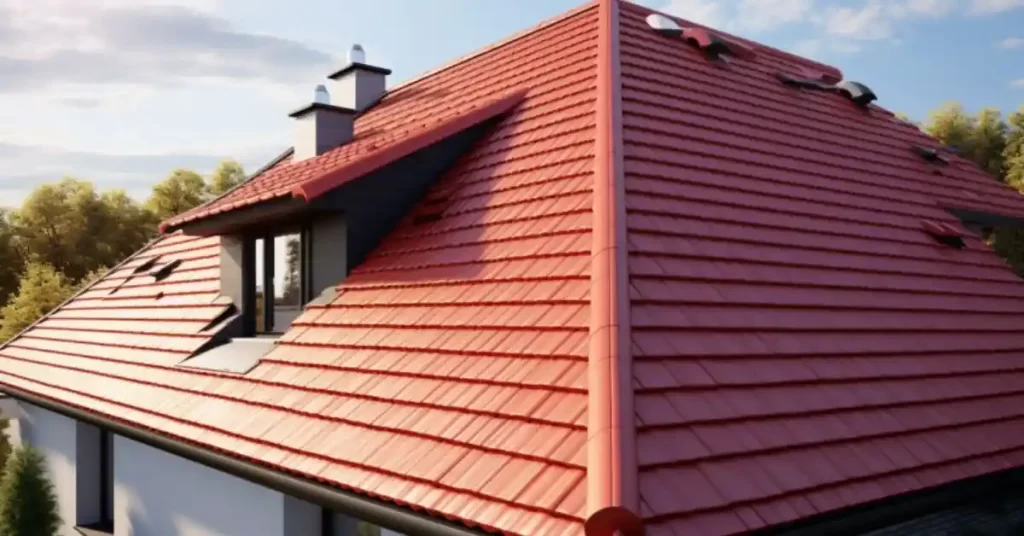
Conclusion
Dealing with roof storm damage requires a multifaceted approach that combines prompt action, informed decision-making, and strategic planning. From the initial steps of identifying and documenting the damage, to navigating the intricacies of insurance claims and undertaking the necessary repairs, each phase is crucial in restoring the safety and integrity of your home.
Understanding the various types of storm damage and their impacts is essential for accurately assessing the condition of your roof and determining the most effective course of action. Whether you choose DIY repairs for minor issues or professional services for more extensive damage, the goal remains the same: to ensure your roof is restored to a condition that can withstand future weather challenges.
Financial considerations, including the costs of repair and the implications for your home’s resale value, are integral to this process. Being prepared with a comprehensive insurance policy, understanding the factors that influence repair costs, and maintaining thorough documentation can alleviate much of the financial strain and uncertainty associated with roof repairs.
Moreover, preventive measures and regular maintenance cannot be overstated. These proactive steps are key to minimizing future storm damage and extending the lifespan of your roof. By selecting durable materials, adhering to a routine inspection schedule, and addressing wear and tear promptly, you not only safeguard your home against the elements but also enhance its long-term value.
In essence, effectively managing roof storm damage is about more than just repairs; it’s about safeguarding your home, your sanctuary, against future uncertainties. By taking these comprehensive steps, you ensure that your roof remains more than just a part of your home’s structure – it continues to be a reliable shield, protecting you and your family through all seasons and storms.
Related Article –
- Optimizing Roof Measurement for Solar Panels: Ultimate Guide
- Mastering Commercial Roof Measurement: Techniques and Tools
- TPO Roofing: Everything You Need to Know
- Ultimate Guide to Roof Flashing: Installation, Types, and Maintenance

Meet William Adams, a seasoned roofing expert with over 30 years of hands-on experience in the industry. Having worked tirelessly under the scorching sun and through the fiercest storms, William brings a wealth of knowledge and expertise to the table. Hailing from the heart of the USA, he’s witnessed the evolution of roofing practices firsthand, mastering every aspect along the way. Now retired from the field, William spends his days cherishing time with his loved ones while sharing his invaluable insights through this platform. With William at the helm, you can trust that every tip, advice, and recommendation provided is backed by years of real-world experience and unwavering dedication to quality craftsmanship. Join us as we journey through the world of roofing, guided by the wisdom and passion of a true industry veteran.
